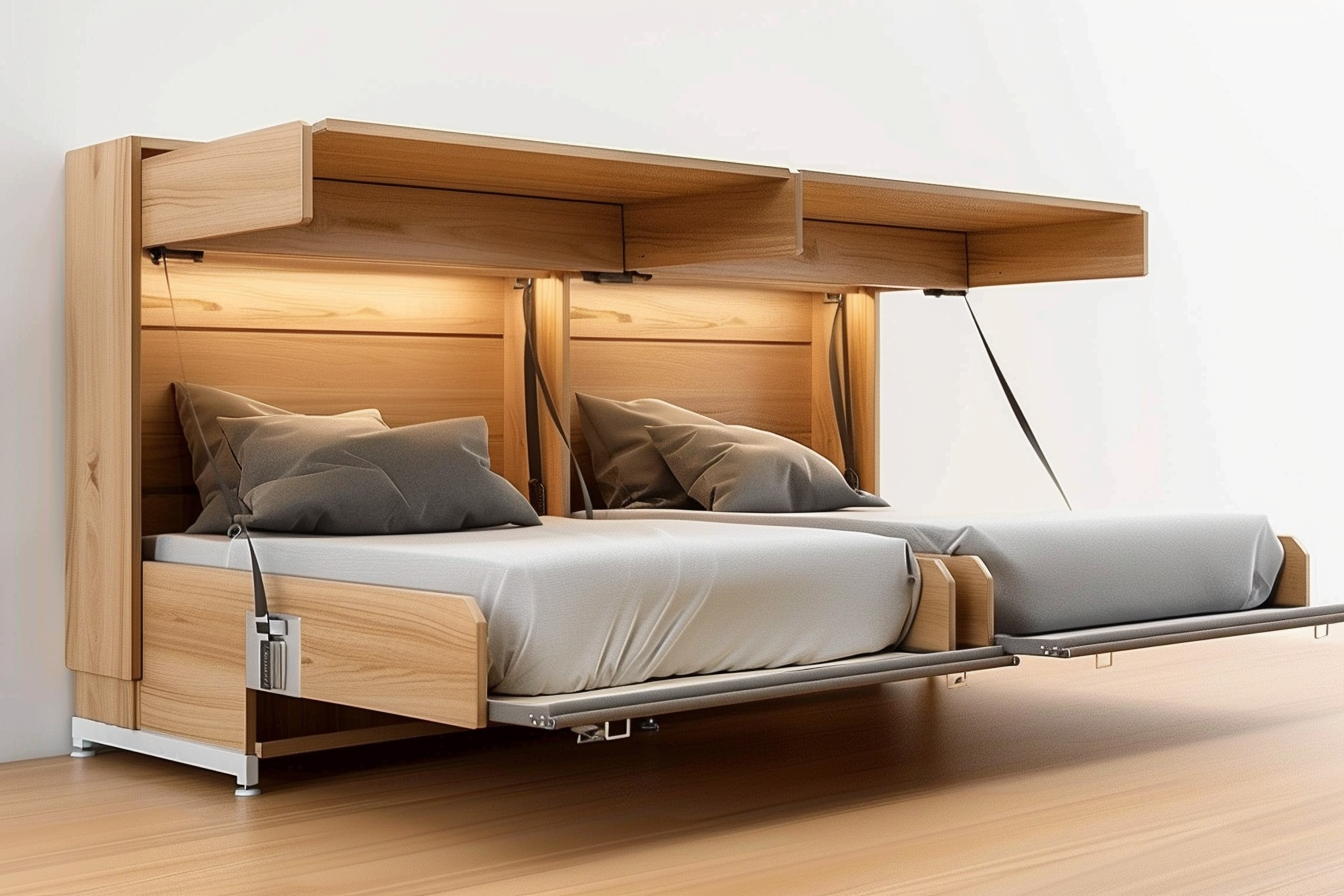Multi-functional furniture designs for adaptable rest spaces
Multi-functional furniture can transform bedrooms into flexible rest spaces that meet changing needs. This article outlines practical design approaches that balance comfort, storage, and environmental factors—helping create adaptable layouts without oversimplifying trade-offs.

Bedrooms are increasingly expected to serve multiple purposes: sleeping, reading, working, dressing, and storage. Designing with multi-functional furniture helps maintain restful environments while maximizing usable space and organization. Thoughtful choices about layout, textiles, and furniture types can support circadian rhythms, manage acoustics, and handle ventilation and humidity concerns, all without reducing the room’s calming qualities.
How can layout and space improve adaptability?
Careful layout planning is the backbone of an adaptable rest space. Position larger multi-functional pieces, such as beds with integrated storage or foldaway desks, against walls to free circulation paths and preserve a sense of openness. Zoning helps: keep sleep-related items clustered and separate work or dressing areas with screens, shelving, or rugs. A flexible layout anticipates changing needs, letting residents reconfigure zones as routines evolve. Space considerations also include circulation clearance and sightlines to windows, which influence daylight exposure and perceived room size.
What furniture supports storage and organization?
Furniture that integrates storage reduces clutter and improves organization, essential for restful bedrooms. Options include platform beds with drawers, headboards with shelving, ottomans that double as linen chests, and wardrobes with modular interiors. These solutions cut the need for extra freestanding units, freeing floor space and simplifying layout. When selecting pieces, prioritize dimensions that match the room and storage capacity that fits daily habits, such as accessible compartments for nightly items and deeper storage for seasonal linens.
How do textiles and linens affect comfort?
Textiles influence both tactile comfort and environmental performance. Breathable linens and layered bedding allow adjustments across seasons and help regulate microclimate near the sleeper. Fabrics also play a role in acoustics: heavier drapes and upholstered headboards absorb sound, contributing to quieter rest spaces. Textiles should be chosen for durability and ease of cleaning to maintain hygiene without detracting from a calm aesthetic. Consider textile maintenance and storage needs when pairing fabrics with multi-functional furniture solutions.
How do color and circadian considerations influence rest?
Color choices and lighting design can support circadian patterns and a restful atmosphere. Cooler, muted tones tend to promote relaxation in many contexts, while warmer accent colors can create a sense of intimacy. Integrating dimmable lighting and layered sources—ambient, task, and accent—lets occupants shift illumination to match the day-night cycle. Positionable furniture that avoids blocking natural light supports daytime alertness and helps reinforce circadian cues from sunlight exposure.
How do acoustics and ventilation affect sleep?
Acoustics and ventilation are core to sleep quality. Multi-functional furniture can contribute positively: bookshelves and upholstered pieces diffuse and absorb sound, reducing echoes. Conversely, placing hard surfaces in ways that create reflective sound paths can increase noise. Ventilation strategies should avoid obstructing airflow; for example, storage units should not block vents or windows. Portable furniture that enables window access and avoids creating tight, stagnant zones helps maintain airflow, which supports thermal comfort and sleep health.
How to manage humidity and the broader bedroom environment?
Humidity control is often overlooked but matters for comfort and fabric longevity. Multi-functional rooms require materials and furniture that tolerate typical indoor humidity ranges. Natural-fiber linens and breathable mattress covers perform better in variable humidity than some highly synthetic textiles. Avoid sealing storage completely without moisture buffering; small vents or breathable drawer liners reduce mold risk. Furniture finishes that resist moisture and simple maintenance routines can preserve furniture and textiles while keeping the room comfortable.
Conclusion Multi-functional furniture designs allow bedrooms to remain adaptable without sacrificing the qualities that support rest. By combining thoughtful layout, integrated storage, appropriate textiles, and attention to color, acoustics, ventilation, and humidity, designers and occupants can create spaces that respond to changing needs while maintaining a calm environment. Practical planning and material choices reduce trade-offs between functionality and comfort, resulting in adaptable rest spaces that perform well across daily routines and seasonal shifts.





